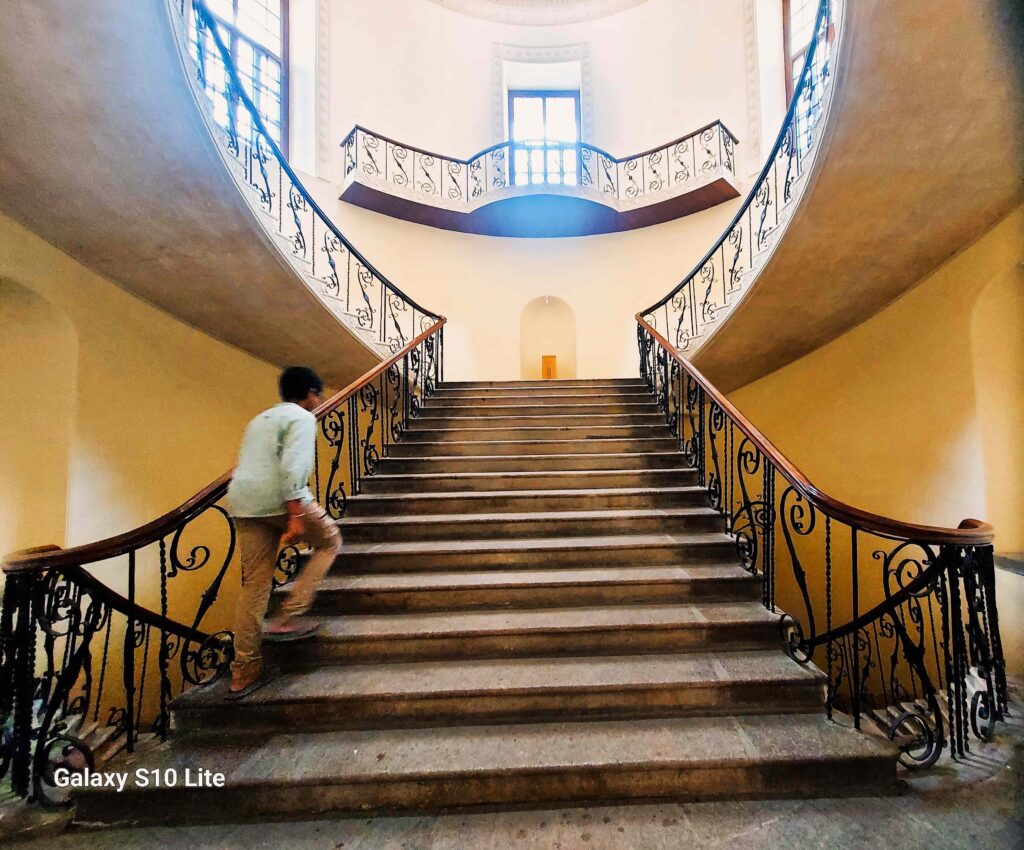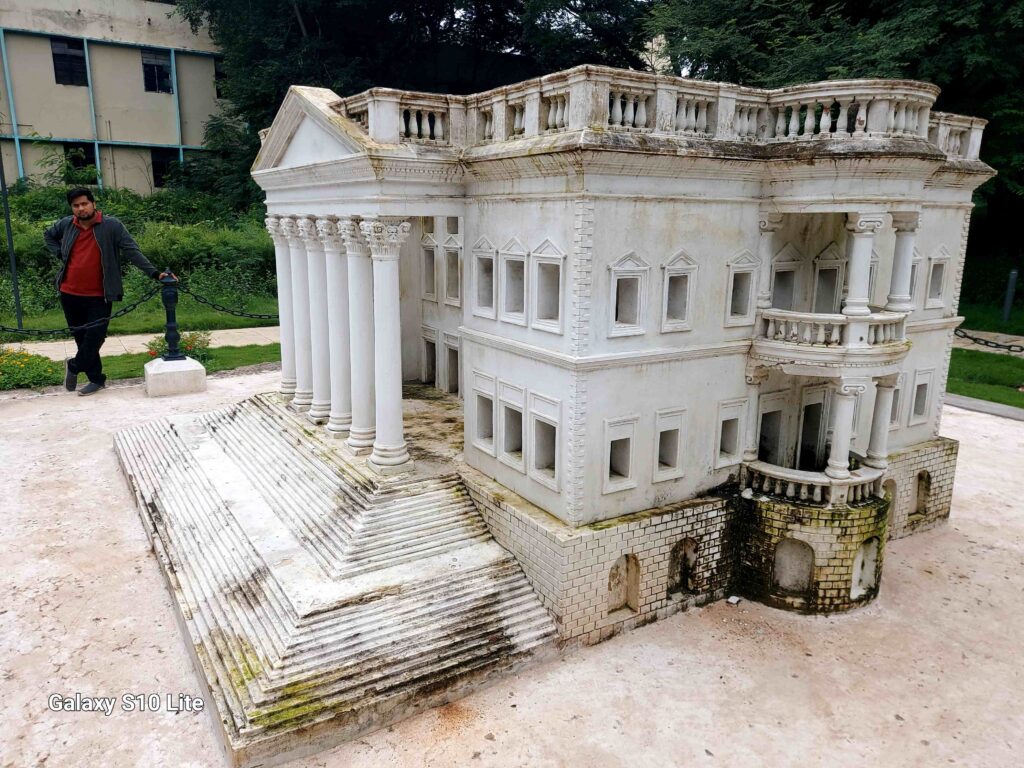
The British Residency Building in Hyderabad, often overshadowed by more famous landmarks of the city, holds a compelling tale of grandeur, romance, and restoration. Its history weaves architectural brilliance and a love story that spans cultures and time. The 220-year-old neoclassical structure was once a symbol of British opulence in India. After years of neglect, it stands renovated, a testimony that highlights the history and heritage of Hyderabad.
It was 1984, I vividly remember when a renowned nature photographer from Bangalore, Hanumanta Rao, with global credentials was invited to give a lecture at Hyderabad. Organised at Koti Women’s College, I was smitten not only by the presentation but also the venue at the magnificent durbar hall of Residency Building. Regrettably the building went into disrepair and shutdown for visitors to engage in long drawn reconstruction works.
An enchanting love story
The British Residency was not just a residence; it was a tribute to a remarkable love story. Colonel James Kirkpatrick, the British Resident at Hyderabad from 1797 to 1805, built the mansion as an office-cum-residence for his Hyderabadi wife, Khair-un-Nissa. Kirkpatrick, a man driven by British imperial ambitions, was captivated not only by political conquests but by the grace and beauty of Khair-un-Nissa, a noblewoman from Nizam’s extended family. He had to let romance roam the rudimentary responses at the Residency.

Their youthful romance blossomed rapidly but defied the norms of both British colonial society and the rigid aristocracy of Hyderabad. Kirkpatrick not only married Khair-un-Nissa but also converted to Islam, adopted Indian attire, and embraced the local culture wholeheartedly. Their marriage, which took place in 1800, faced opposition from both British and Hyderabadi circles. Despite these obstacles, they lived happily for a short time.
Architectural splendour
Designed by Lieutenant Russell of the Madras Engineers, the Residency is an architectural marvel, embodying the magnificence and wealth of the British Empire. With massive Corinthian pillars each standing 41 feet high, the building looks imposing from all perspectives. Sprawling 60 acres in its original landscape, next to the Musi River, it is now reduced to 42 acres. The Residency featured extensive manicured gardens, impressive ballrooms, and opulent drawing rooms. It was designed in a Palladian architectural style, akin to the White House in Washington, USA. The resemblance of the Residency to other Western architecture made it a symbol of British dominance in Hyderabad. Both the constructions came up in the same period and have uncanny similarities, however the Residency Building in Hyderabad is bigger, better, and completed a few years earlier than the White House.

The Residency building flaunts a high domed regal roof Durbar Hall with mega chandeliers imported from England, parquet floors of inlaid wood, and galleried halls that hosted garden parties, music meetings, and lavish social gatherings. The zenana, a section built for Khair-un-Nissa, ensured she could view the entire mansion while maintaining purdah, the tradition of seclusion for Muslim women. Every detail of the building was a testament to love and luxury, from the creative ceilings to the vast verandas.
Degeneration and disdain
After the British left Hyderabad in 1949, the Residency was designated as the Koti Women’s College, under the aegis of Osmania University. However, during the years of political upheaval and transition, the building fell into a state of neglect. Without the regular upkeep it once received, the grand halls and galleries began to slowly decay. The ambiguity of World War II and the Indian Independence movement further contributed to its deterioration. Over the years, new structures were added to the campus without consideration for the historical integrity of the original building.
Despite its succulent significance, the British Residency slipped into obscurity, its grandeur hidden behind the walls of the Women’s College. Even the 6000 female students who walk the campus daily are largely unaware of the building’s historical heritage. By the late 1990s, the structure was on the verge of breakdown, with classrooms in disrepair, leaking roofs, overgrown vegetation and pigeons freely nesting in the rafters.
Gateway to new ideas
William Dalrymple’s White Mughals brought renewed attention to the Residency and its historical significance. The book chronicles the love story of Kirkpatrick and Khair-un-Nissa and also highlights the magnificent structure that had once been their home. Though the lover’s narrative was prevalent before, the author’s research for five years, captured the imagination of readers worldwide and rekindled interest in this long-forgotten fortitude of the edifice. The book’s popularity led to various worldwide donors contributing millions for the restoration of the building. This financial boost, along with the building’s inclusion on the World Monuments Watch List in 2002 and 2004, set the stage for twenty long years of cautious conservation and renovation.
Restoration and revival

The path to restoring the Residency had its regular bureaucratic delays and challenges. By the end of the twentieth century, heavy traffic, poor maintenance, and faulty repair work had left the college in a state of shabbiness. Years of neglect had weakened the building’s foundation, and painstaking efforts were made to restore the fundamentals, including its impressive staircase and oval rooms. The elements played spoilsport, particularly rainwater damage to the age-old timber support structure of the building. The refurbishment team of the World Monuments Fund faced unique challenges and the process required creativity and dedication. Despite many hurdles, the restoration brought new life to the edifice, peeling back centuries of decay to reveal its former glory and now stands imposing in its new incarnation.
A monumental legacy
Recently, after forty years, on 8th September during a heritage walk, I found the British Residency glowing with glory. It is a reminder of Hyderabad’s rich cultural amalgamation embracing both the old and the new. It also symbolizes the power of love and how it can transcend the boundaries of race, religion, and politics. The story of Kirkpatrick and Khair-un-Nissa immortalized in White Mughals, continues to capture the imagination of people, and their love is enshrined in the majestic structure of the Residency and its associated buildings. Its restoration is not just about preserving a structure, but about reviving a story that deserves to be remembered for generations to come. While access to the building is limited, the British Residency is a magnet for filmmakers who use the exterior and the interior locations for movies.
Shiva Kumar says he is “a Sporadic Scribe, Wilderness Watcher, Heritage Hunter and Candid Camera image Creator.” He is former General Manger with Indian Oil Corporation Limited.



